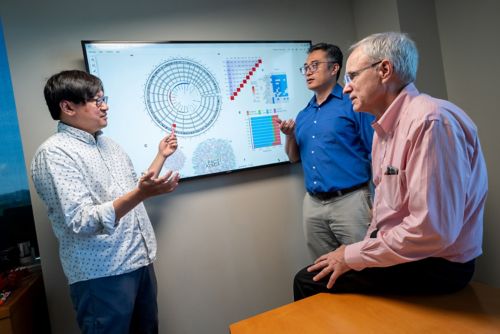St. Jude Family of Websites
Explore our cutting edge research, world-class patient care, career opportunities and more.
St. Jude Children's Research Hospital Home

- Fundraising
St. Jude Family of Websites
Explore our cutting edge research, world-class patient care, career opportunities and more.
St. Jude Children's Research Hospital Home

- Fundraising
X-linked severe combined immunodeficiency disorder (SCID-X1), commonly called “bubble boy disease,” is a disorder in which patients are born with a defective gene that prevents them from producing immune cells. In a study published in the New England Journal of Medicine in 2019, St. Jude scientists used lentiviral gene therapy to restore multiple infants’ immune systems by supplying copies of the corrected gene.
Through ongoing monitoring efforts, the researchers have now documented where the corrected gene copies integrate into patient DNA and why the vector integrates at that site. Published in Science Advances, their findings provide a foundation for understanding the biology and safety of using lentiviral vectors in the clinical setting.

First author Koon-Kiu Yan, PhD; senior co-corresponding author Jiyang Yu, PhD; and co-corresponding Stephen Gottschalk, MD, documented where corrected gene copies integrate into patient DNA, improving our understanding of lentiviral vector safety when used in clinical settings.
“We now have a robust pipeline to monitor the safety of lentiviral gene therapies,” said senior co-corresponding author Jiyang Yu, PhD, Department of Computational Biology interim chair. “This gives hope to patients with genetic diseases that can be cured by lentiviral gene therapy.”
Several years posttreatment, the St. Jude lentiviral gene therapy for SCID-X1 appears effective and safe. Previous research indicated that lentiviral gene therapies integrated into areas of DNA that seemed safer than the sites, such as oncogenes, affected by earlier technologies, but until recently, researchers could not explain why. The team identified where the gene was added to the participants’ DNA and why the vector integrated at that location.
The new, corrected gene had been inserted into certain genomic hotspots within the study participants’ DNA. The reason was deceptively simple: From a three-dimensional structural perspective, the hotspots are regions the lentiviral vector first encounters after entering the cell’s nucleus through a channel called the nuclear pore.
“It’s like someone coming into a room and taking the first available seat near the door,” said co-corresponding author Stephen Gottschalk, MD, Department of Bone Marrow Transplantation and Cellular Therapy chair. “The room is the nucleus; the seats are these DNA elements right near the door of the nuclear pore.”
This integration-site pattern of the gene therapy into patient cells illuminates the safety and efficacy of the approach.
The group used single-cell multi-omics analysis to understand whether a functional copy of the corrected gene was in patient cells, to what extent it was expressed, and the chromatin organization. The lentiviral vector used in the current study does not disrupt oncogenes, which improves treatment safety.
The same integration pattern was observed with a lentiviral vector used to create chimeric antigen receptor (CAR) T cells, suggesting that the phenomenon is a general mechanism that is not restricted to the SCID-X1 vector.
“The integration-pattern data could serve as a map of potentially safe integration sites,” Gottschalk explained. “The single-cell analysis is like deep cartography — a map with a near pixel-perfect resolution. The many integration sites could be used as a safety reference for future lentiviral gene therapies.”